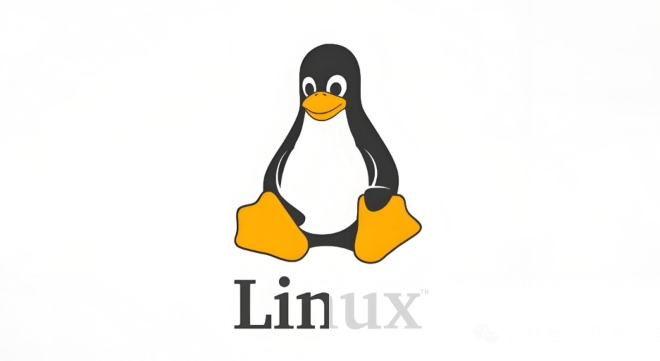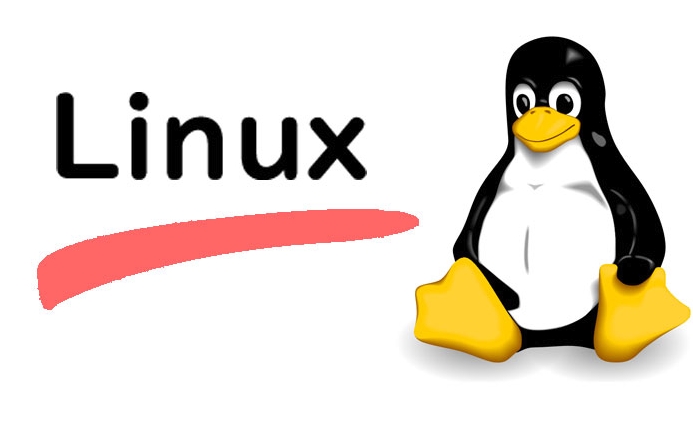The best Linux distribution for developers in 2024 depends on individual needs, but top choices include: 1. Ubuntu LTS for stability, broad support, and enterprise use; 2. Fedora Workstation for cutting-edge tools and container development; 3. Arch Linux for full customization and control, ideal for experienced users; 4. Debian for rock-solid reliability and backend work; 5. Pop!_OS for a developer-optimized, user-friendly experience with strong hardware support; with honorable mentions for openSUSE Tumbleweed, Linux Mint, and AlmaLinux/Rocky Linux for specific use cases; ultimately, the right distro aligns with your workflow, balance of stability versus new features, and preferred level of system control, so testing via live USB or VM is recommended before committing.

When it comes to picking the best Linux distribution for developers in 2024, there’s no one-size-fits-all answer—but some distros stand out thanks to their stability, package management, community support, and developer tooling. Whether you're into web development, system programming, data science, or containerized apps, the right distro can streamline your workflow.

Here are the top Linux distros that cater well to developers this year:
1. Ubuntu LTS – The Go-To for Stability and Support
Ubuntu remains a favorite among developers, especially the Long-Term Support (LTS) versions like 22.04 LTS and the upcoming 24.04 LTS. It strikes a great balance between reliability and up-to-date tooling.

Why it’s great for developers:
- Huge community and extensive documentation
- Pre-installed with many development tools (GCC, Python, Git)
- Excellent support for Docker, Kubernetes, and cloud platforms
- Snap and APT package managers offer wide software availability
- Officially supported by most dev tools and cloud providers (e.g., AWS, GitHub Codespaces)
Best for: Full-stack developers, DevOps engineers, beginners, and enterprise environments.

Pro tip: Use Ubuntu Pro (free for personal use) to get extended security updates and FIPS compliance.
2. Fedora Workstation – Cutting-Edge with Solid Foundations
Fedora is backed by Red Hat and is often the first to adopt new open-source technologies. It's ideal if you want to stay on the bleeding edge without sacrificing stability.
Key advantages:
- Ships with the latest kernel, GCC, Python, and systemd versions
- Strong integration with container tools (Podman, Buildah, Skopeo)
- Default GNOME desktop is clean and developer-friendly
- Flatpak and RPM Fusion provide access to a broad app ecosystem
- Great for testing Red Hat Enterprise Linux (RHEL) workflows
Best for: Open-source contributors, system-level developers, and those working with containers or RPM-based systems.
Developers using Red Hat OpenShift or contributing to upstream projects will feel right at home.
3. Arch Linux – Maximum Control and Customization
Arch Linux is for developers who want full control over their environment. It follows a rolling release model, so you’re always on the latest software versions.
Why developers love it:
- Minimal base system—you install only what you need
- Rolling updates mean no major version upgrades
- AUR (Arch User Repository) has nearly every dev tool imaginable
- Transparent configuration: you learn how Linux works under the hood
But keep in mind:
- Steeper learning curve
- Requires manual setup and maintenance
- Not ideal if you want “just works” out of the box
Best for: Experienced developers, tinkerers, and those who want a lean, personalized setup.
Consider Manjaro or EndeavourOS as beginner-friendly Arch alternatives with similar benefits.
4. Debian – Rock-Solid and Reliable
Debian is the foundation of Ubuntu and many other distros. It’s known for its stability and strict adherence to free software principles.
Pros for developers:
- Extremely stable—great for production servers and long-running projects
- Massive repository with thousands of dev packages
- Predictable release cycle (good for reproducible environments)
- Lightweight and runs well on older hardware
Downsides:
- Software versions can be outdated (especially in stable releases)
- Less beginner-friendly than Ubuntu
Best for: Backend developers, sysadmins, and anyone prioritizing stability over new features.
Use Debian Testing if you want newer packages with decent stability.
5. Pop!_OS – Developer-First Design from System76
Pop!_OS, developed by System76, is Ubuntu-based but optimized for developers and creators. It comes with a polished experience out of the box.
Standout features:
- Tiling window manager and keyboard-driven workflow
- Pre-configured for NVIDIA and AMD GPUs (great for ML/AI devs)
- Built-in support for setting up dev environments
- Clean, modern UI with excellent HiDPI support
Best for: Developers using System76 hardware, AI/ML engineers, and those who value design and usability.
Pop!_OS also integrates well with cosmic (its upcoming desktop environment), adding even more dev-centric workflows.
Honorable Mentions
- openSUSE Tumbleweed – Rolling release with strong YaST integration; great for C and enterprise developers.
- Linux Mint – User-friendly, ideal for developers transitioning from Windows.
- AlmaLinux/Rocky Linux – Drop-in RHEL replacements, perfect for enterprise DevOps and server-side development.
How to Choose? Ask Yourself:
- Do you need stability or latest features?
- Are you okay with manual setup, or do you want plug-and-play?
- Do you work with containers, cloud, or bare metal?
- Is your focus web, system, data, or embedded development?
Ultimately, the best distro is the one that fits your workflow. Many developers use different distros across projects—Ubuntu for cloud work, Fedora for containers, Arch for personal tinkering.
So test a few with a live USB or VM. Most of the top tools (VS Code, Docker, Git, Python, Node.js) run everywhere. The ecosystem matters more than the distro itself.
Basically, go with Ubuntu LTS if you're unsure, Fedora if you like new tech, or Arch if you want full control. Everything else is a variation on that theme.
The above is the detailed content of Choosing the Best Linux Distro for Developers in 2024. For more information, please follow other related articles on the PHP Chinese website!

Hot AI Tools

Undress AI Tool
Undress images for free

Undresser.AI Undress
AI-powered app for creating realistic nude photos

AI Clothes Remover
Online AI tool for removing clothes from photos.

Clothoff.io
AI clothes remover

Video Face Swap
Swap faces in any video effortlessly with our completely free AI face swap tool!

Hot Article

Hot Tools

Notepad++7.3.1
Easy-to-use and free code editor

SublimeText3 Chinese version
Chinese version, very easy to use

Zend Studio 13.0.1
Powerful PHP integrated development environment

Dreamweaver CS6
Visual web development tools

SublimeText3 Mac version
God-level code editing software (SublimeText3)

Hot Topics
 Install LXC (Linux Containers) in RHEL, Rocky & AlmaLinux
Jul 05, 2025 am 09:25 AM
Install LXC (Linux Containers) in RHEL, Rocky & AlmaLinux
Jul 05, 2025 am 09:25 AM
LXD is described as the next-generation container and virtual machine manager that offers an immersive for Linux systems running inside containers or as virtual machines. It provides images for an inordinate number of Linux distributions with support
 7 Ways to Speed Up Firefox Browser in Linux Desktop
Jul 04, 2025 am 09:18 AM
7 Ways to Speed Up Firefox Browser in Linux Desktop
Jul 04, 2025 am 09:18 AM
Firefox browser is the default browser for most modern Linux distributions such as Ubuntu, Mint, and Fedora. Initially, its performance might be impressive, however, with the passage of time, you might notice that your browser is not as fast and resp
 How to troubleshoot DNS issues on a Linux machine?
Jul 07, 2025 am 12:35 AM
How to troubleshoot DNS issues on a Linux machine?
Jul 07, 2025 am 12:35 AM
When encountering DNS problems, first check the /etc/resolv.conf file to see if the correct nameserver is configured; secondly, you can manually add public DNS such as 8.8.8.8 for testing; then use nslookup and dig commands to verify whether DNS resolution is normal. If these tools are not installed, you can first install the dnsutils or bind-utils package; then check the systemd-resolved service status and configuration file /etc/systemd/resolved.conf, and set DNS and FallbackDNS as needed and restart the service; finally check the network interface status and firewall rules, confirm that port 53 is not
 How would you debug a server that is slow or has high memory usage?
Jul 06, 2025 am 12:02 AM
How would you debug a server that is slow or has high memory usage?
Jul 06, 2025 am 12:02 AM
If you find that the server is running slowly or the memory usage is too high, you should check the cause before operating. First, you need to check the system resource usage, use top, htop, free-h, iostat, ss-antp and other commands to check CPU, memory, disk I/O and network connections; secondly, analyze specific process problems, and track the behavior of high-occupancy processes through tools such as ps, jstack, strace; then check logs and monitoring data, view OOM records, exception requests, slow queries and other clues; finally, targeted processing is carried out based on common reasons such as memory leaks, connection pool exhaustion, cache failure storms, and timing task conflicts, optimize code logic, set up a timeout retry mechanism, add current limit fuses, and regularly pressure measurement and evaluation resources.
 Install Guacamole for Remote Linux/Windows Access in Ubuntu
Jul 08, 2025 am 09:58 AM
Install Guacamole for Remote Linux/Windows Access in Ubuntu
Jul 08, 2025 am 09:58 AM
As a system administrator, you may find yourself (today or in the future) working in an environment where Windows and Linux coexist. It is no secret that some big companies prefer (or have to) run some of their production services in Windows boxes an
 How to Burn CD/DVD in Linux Using Brasero
Jul 05, 2025 am 09:26 AM
How to Burn CD/DVD in Linux Using Brasero
Jul 05, 2025 am 09:26 AM
Frankly speaking, I cannot recall the last time I used a PC with a CD/DVD drive. This is thanks to the ever-evolving tech industry which has seen optical disks replaced by USB drives and other smaller and compact storage media that offer more storage
 How to find my private and public IP address in Linux?
Jul 09, 2025 am 12:37 AM
How to find my private and public IP address in Linux?
Jul 09, 2025 am 12:37 AM
In Linux systems, 1. Use ipa or hostname-I command to view private IP; 2. Use curlifconfig.me or curlipinfo.io/ip to obtain public IP; 3. The desktop version can view private IP through system settings, and the browser can access specific websites to view public IP; 4. Common commands can be set as aliases for quick call. These methods are simple and practical, suitable for IP viewing needs in different scenarios.
 How to Install NodeJS 14 / 16 & NPM on Rocky Linux 8
Jul 13, 2025 am 09:09 AM
How to Install NodeJS 14 / 16 & NPM on Rocky Linux 8
Jul 13, 2025 am 09:09 AM
Built on Chrome’s V8 engine, Node.JS is an open-source, event-driven JavaScript runtime environment crafted for building scalable applications and backend APIs. NodeJS is known for being lightweight and efficient due to its non-blocking I/O model and






